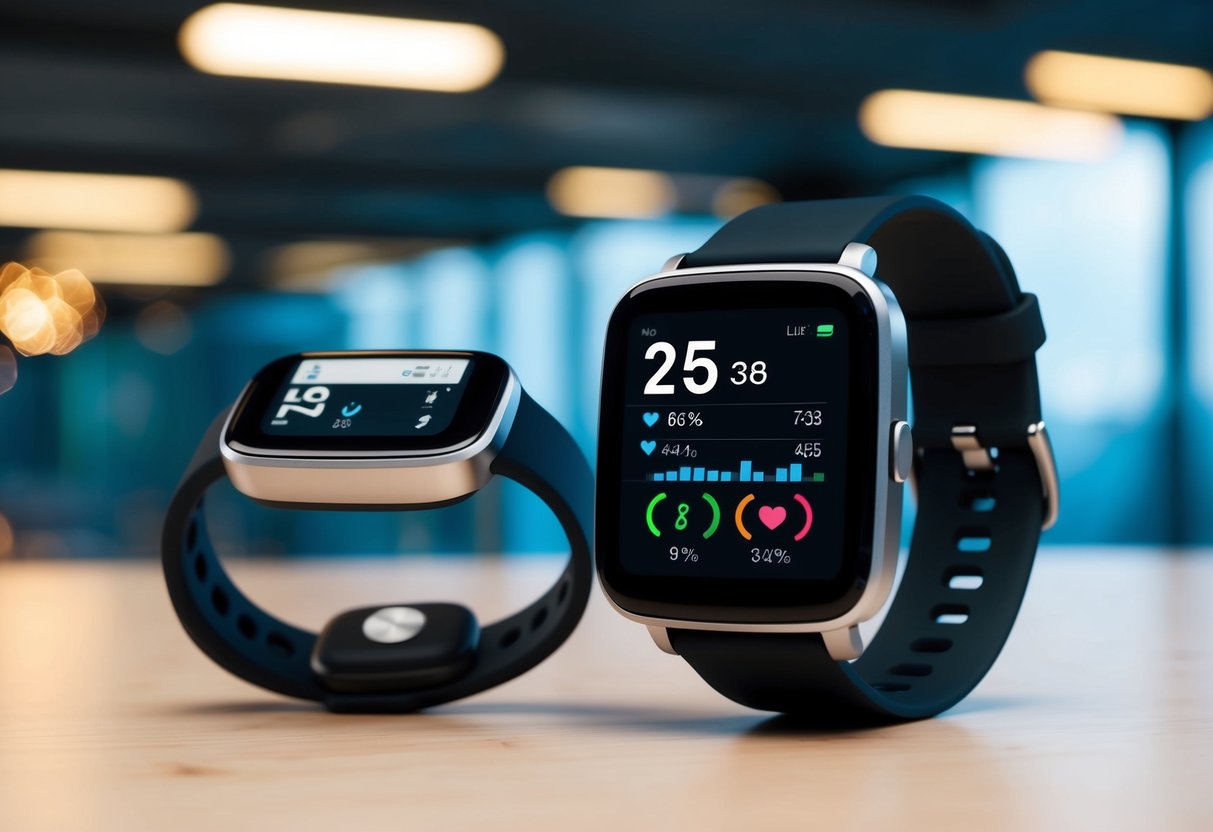Smart Wearable Health Devices: Top Picks for Fitness Monitoring
Samsung’s Galaxy Watch and Fitness Integration
Samsung’s Galaxy Watch series, notably the latest Galaxy Watch 7, integrates fitness-focused features with comprehensive smart functionalities. It includes heart rate monitoring, sleep tracking, and stress management, making it a versatile tool for health-conscious users.
One key advantage is its compatibility with Samsung’s diverse tech ecosystem, providing enhanced connectivity with other Samsung devices. With its sleek design and robust health tracking capabilities, the Galaxy Watch 7 competes directly with other leading brands, offering a premium experience for users who value both style and substance.
Affordable Alternatives: Xiaomi and Amazfit
Xiaomi and Amazfit provide cost-effective options in the fitness tracker market, with models like the Amazfit Band 7 offering essential features at accessible price points. Despite the lower cost, these devices deliver reliable fitness tracking capabilities, such as step counting, sleep monitoring, and heart rate tracking.
Xiaomi’s devices are designed for those seeking practical and straightforward fitness functionality. The affordability does not compromise quality, making these options attractive for budget-conscious consumers. By focusing on core health metrics in a sleek package, Xiaomi and Amazfit ensure effective performance without the hefty price tag.
Key Features for Optimal Fitness Tracking

Smart wearable health devices offer essential tools for those looking to monitor various fitness metrics effectively. They provide vital functionalities that enhance user experience and ensure precise data collection.
Accuracy in Health Metrics and Movement
For effective fitness tracking, accuracy in health metrics and movement is crucial. Devices must effectively measure steps, heart rate, and calories burned. Quality sensors and advanced algorithms enhance the precision of these metrics, offering users reliable data. A heart rate monitor, for instance, should track changes in heart rate consistently during varying levels of physical activity.
For enhanced accuracy, some devices integrate multiple sensors that collaborate to provide comprehensive insights. Features like ECG and blood oxygen level monitoring add layers of health analysis. Accuracy in tracking helps users better understand their physical condition and make informed lifestyle choices.
Battery Life and Charging Convenience
Long battery life is vital for continuous usage without frequent interruptions. Users benefit from devices that can last days on a single charge, especially those leading active lifestyles. Efficient power consumption ensures that essential functions like GPS and heart rate monitoring remain active longer.
Charging convenience is also essential. Quick charging capabilities and magnetic charging ports ease the process, reducing downtime. Some devices also use wireless charging, adding to user convenience. These features not only enhance the user experience but also ensure they have uninterrupted access to health data.
Water Resistance for All Weather Use
For all-weather versatility and different environmental conditions, water resistance is important. Devices with water resistance can handle sweat during intense workouts and exposure to rain or splashes without damage. This feature is essential for swimmers and those involved in water sports, as it enables tracking without removing the device.
Water-resistant ratings such as IP68 provide a standard measure of a device’s ability to withstand moisture. This ensures that users can trust their fitness tracker in various weather conditions and environments, maintaining its functionality and extending its lifespan.
Built-In GPS for Precise Location Tracking
Built-in GPS is essential for users who track outdoor activities like running, cycling, or hiking. It enables the accurate logging of distance, speed, and route, providing insights that are important for tracking progress and setting goals. This eliminates the need for carrying additional GPS devices or relying solely on smartphone connectivity.
GPS data integration with fitness apps allows for detailed mapping and analysis. For fitness enthusiasts interested in exploring new routes, accurate GPS capability significantly enhances the device’s usefulness and provides valuable data for refining workout routines.
Heart Rate Monitoring for Cardiovascular Health
Heart rate monitoring plays a critical role in assessing cardiovascular health. Continuous heart rate monitoring helps users maintain target heart rate zones during workouts, maximizing exercise efficiency. Accurate heart rate monitors can detect irregular heartbeats or fluctuations indicative of potential health issues.
When paired with features like ECG sensors, these devices offer comprehensive heart health insights. Data generated supports users in understanding how their body responds to different levels of activity and stress, contributing to overall wellbeing and encouraging timely medical consultation when necessary.
Touchscreen and Interface Design
A user-friendly touchscreen and interface design enhance interaction with the device. Intuitive layouts and responsive screens ensure users can easily navigate through features and settings. The interface should present data clearly, making it easier for users to interpret health metrics.
Some devices offer customizable watch faces or widgets, tailoring the display to individual preferences. Gestures and touch responses should be smooth, allowing for easy access to notifications, health data, and exercise modes. Quality interface design significantly affects user satisfaction and engagement with the device’s full range of features.



